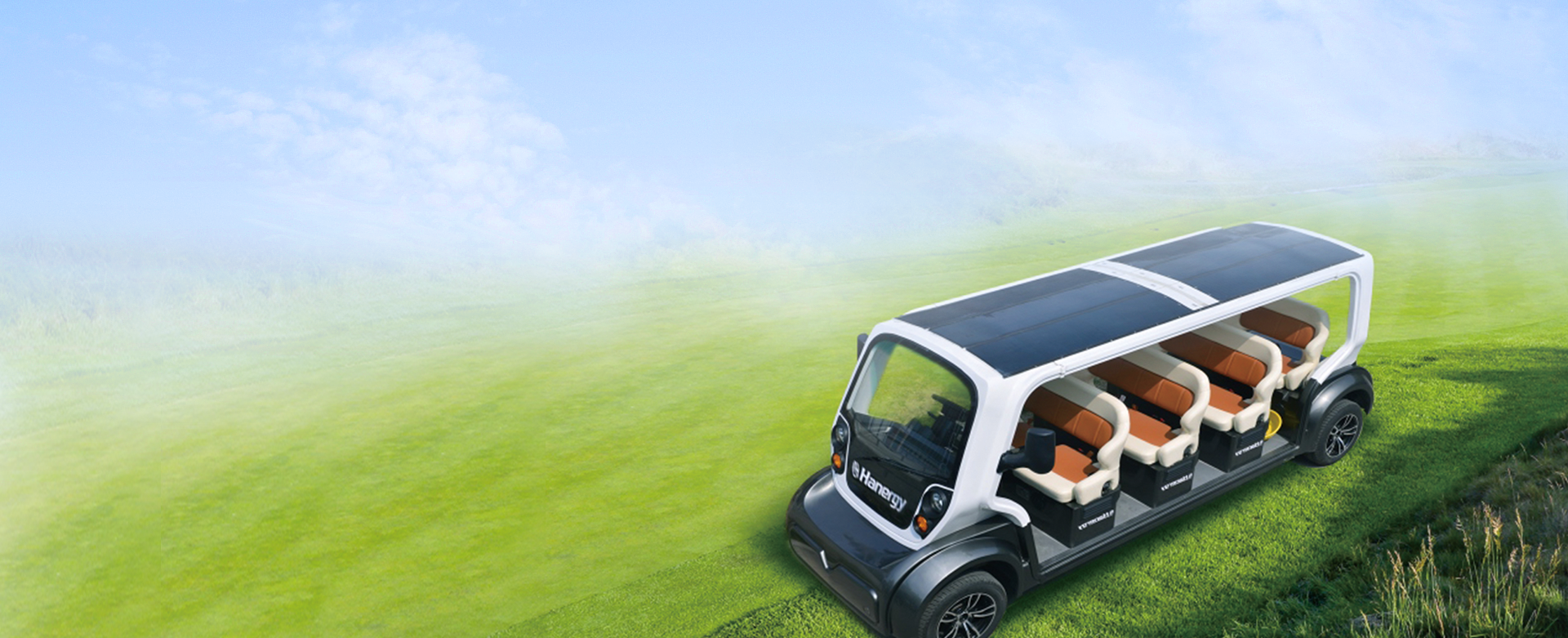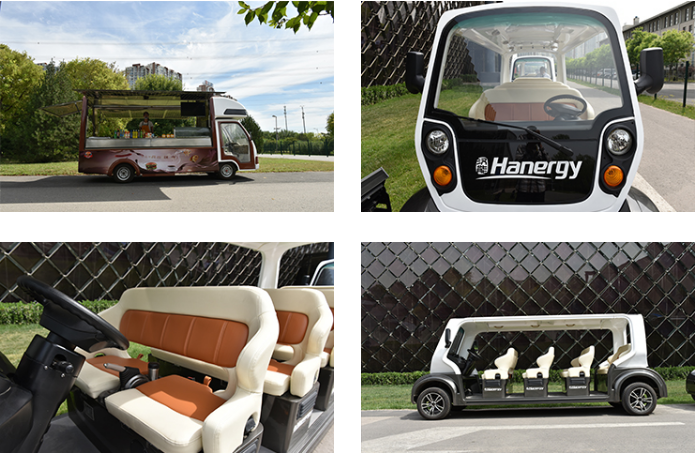
Solar Roof of Low Speed Vehicle
Hanergy’s flexible thin-film modules can be directly installed onto a PVC/PTFE membrane surface without affecting the car performance and solving the problem of high electrical power consumption. MiaSolé,GSE and Alta Devices’ chip products feature lightness, thinness and flexibility, among other characteristics, which make them fit to be widely used in low speed car/mopeds, sightseeing cars and buses, dining cars and other many vehicles, as long as their speed is of less of 70 km/h. Low-speed electric vehicles in China, driven by an increasing demand in recent years despite the uncertain concerning public policies, continue to experience a rapid development. In 2016, there were around 1 million of them only in China.

At present, some owners of low-speed electric cars are already buying solar power modules to install themselves with the aim to increase the driving distance of their low-speed electric cars while experiencing solar technology. As prices of thin-film solar products go down, the quantity of car modification for thin-film solar power will surely grow remarkably.
As it is known, the specific standards for low-speed electric cars are still being drafted; they will, however, be enjoying the same road driving rights as fuel-powered vehicles. The low-speed electric cars industry, which has an inelastic demand for solar car roofs allowing vehicles to charge during usage, will steeply rise in the following years. Since third-tier cities have relatively few charging points, cities below the third-tier level are the main market for this type of vehicles. Conservatively speaking, the market scale of low-speed cars will also break through the Gigawatt ceiling. Facing such a big low-end consumer market, the key for the future of low speed electric vehicles lies in upgrading and regulation. Getting low-speed electric vehicles to the new energy market will certainly stir-up the market and will mean yet another step further for our endeavor on the new energy vehicle field.
